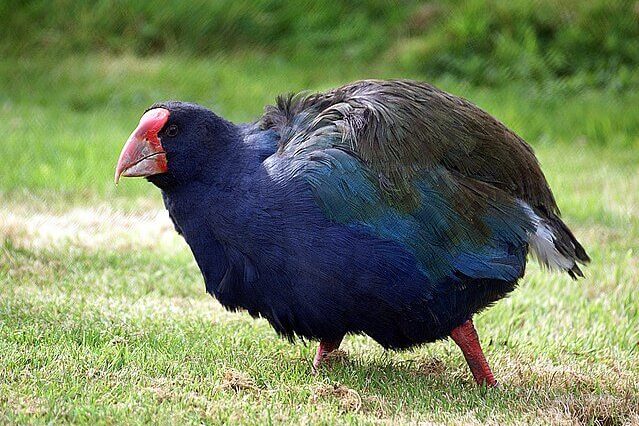
In a heartening endeavor to safeguard one of the world’s rarest avian species from the brink of extinction, two flightless takahe, Waitaa and Bendigo, were recently reintroduced to a protected sanctuary in New Zealand.
This momentous release occurred within the confines of Zealandia, Wellington, and was met with jubilant cheers from an enthusiastic crowd.
This move follows a broader conservation initiative that unfolded last month when 18 takahe were set free in the South Island’s mountainous terrain. The collective goal is to bolster the dwindling wild population of these unique birds.
The takahe’s history is marked by perilous scarcity. By the end of the 19th century, these magnificent creatures had been all but written off due to relentless predation. However, a slender thread of hope emerged in 1948 when a small number was serendipitously discovered in the remote grasslands of the Murchison Mountains on the South Island.
This watershed moment ignited a dedicated conservation crusade, resulting in a substantial increase in the takahe population, which now hovers close to 500.
Characterized by their rotund physique, striking red beaks, robust legs, and vivid blue and green plumage, takahe are often mistaken for pukeko swamp hens, which are noticeably slimmer. The Department of Conservation in New Zealand underscores the significance of these distinctions.
These birds are known to breed only once a year, nurturing one to two chicks, and have a lifespan of up to 18 years in the wild and 22 years in sanctuary environments. Their diet consists primarily of starchy leaves and seeds, making them unique in their dietary preferences.
Waitaa and Bendigo now join an existing pair of takahe at Zealandia sanctuary in the North Island, which is enclosed by a predator-exclusion fence. This endeavour represents a crucial step in shielding New Zealand’s native avian population from land predators introduced by human settlers, whose evolution predates that of mammals.
In a remarkable conservation stride, nine breeding-age pairs were released last week at Greenstone Station, located in the Lake Whakatipu region. This effort is aimed at establishing a third wild population on the South Island, a place of special cultural and spiritual significance for the takahe.
The other two extant wild populations are found in Fiordland’s Murchison Mountains and in Kahurangi National Park, where the initial takahe release took place in 2018. Within the indigenous Māori community of New Zealand, these magnificent birds are considered taonga, representing a treasure that must be zealously protected.
“After decades of hard work to increase the takahe population, it’s rewarding to now be focusing on establishing more wild populations, but it comes with challenges,” said Doc’s Deidre Vercoe after last week’s release.
“Establishing new wild native species populations can take time and success is not guaranteed. If we want takahe to thrive, we need to explore new sites and learn as much as we can to protect the birds now and into the future.”
For decades, conservationists have diligently worked to manage the populations of the takahe’s natural predators, including stoats, feral cats, ferrets, and rats. A recent deployment of 45 ferret traps and 25 cat traps underscores the unwavering commitment to protecting these remarkable creatures.
The International Union for Conservation of Nature and Natural Resources classifies the South Island takahe as endangered, situated perilously close to extinction. Tragically, the North Island takahe has been declared extinct, underscoring the critical importance of these ongoing conservation efforts. In an increasingly imperilled world, New Zealand’s sanctuary sanctuaries represent beacons of hope, ensuring that the enchanting takahe continue to thrive against all odds.
——————————————————————————
At Natural World Fund, we are passionate about stopping the decline in our wildlife.
The decline in our wildlife is shocking and frightening. Without much more support, many of the animals we know and love will continue in their decline towards extinction.
When you help to restore a patch of degraded land through rewilding to forests, meadows, or wetlands, you have a massive impact on the biodiversity at a local level. You give animals a home and food that they otherwise would not have had, and it has a positive snowball effect on the food chain.
We are convinced that this is much better for the UK than growing lots of fast-growing coniferous trees, solely to remove carbon, that don’t actually help our animals to thrive.
This is why we stand for restoring nature in the UK through responsible rewilding. For us, it is the right thing to do. Let’s do what’s right for nature!
Donate today at https://naturalworldfund.com/ and join in the solution!

